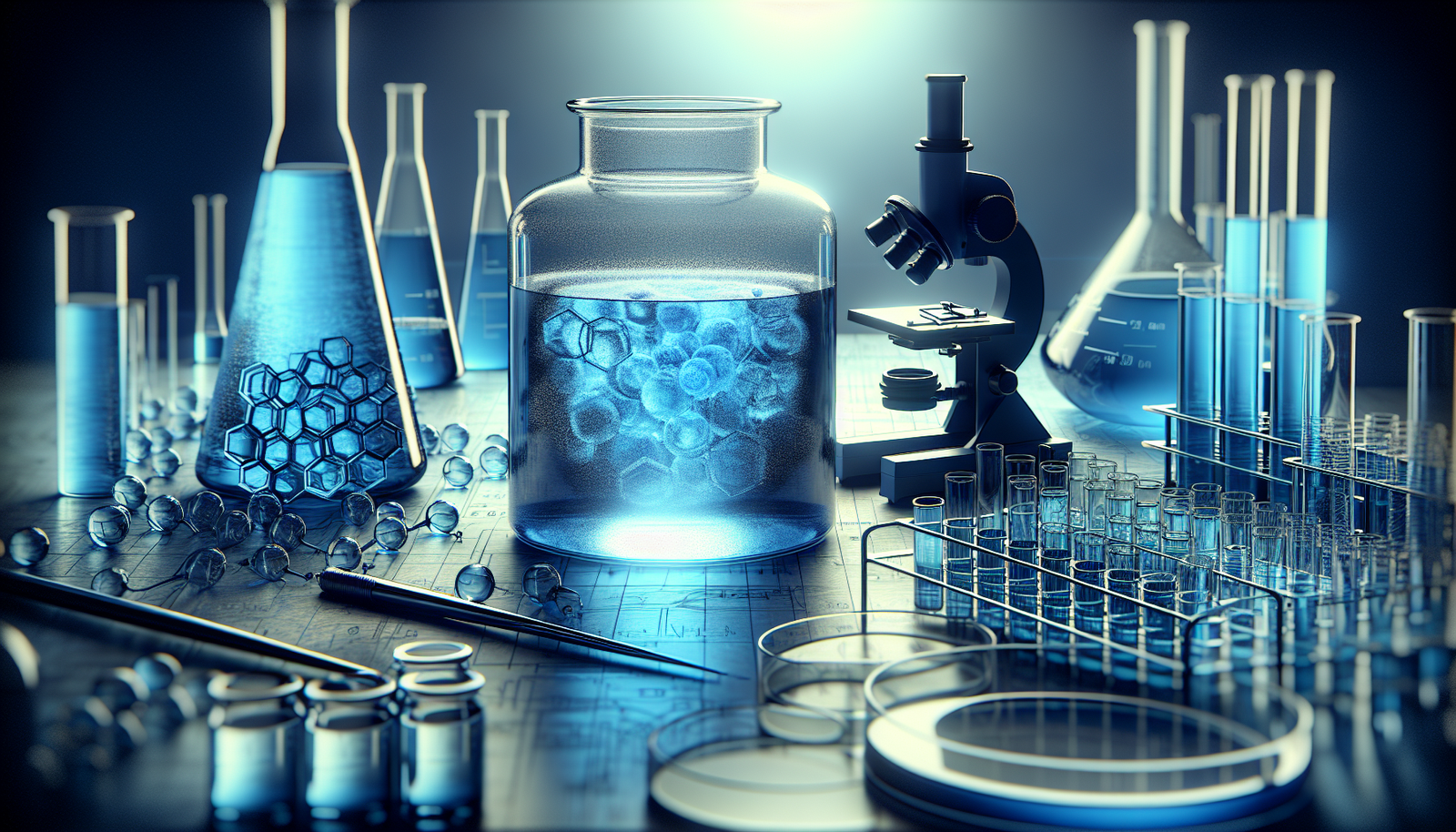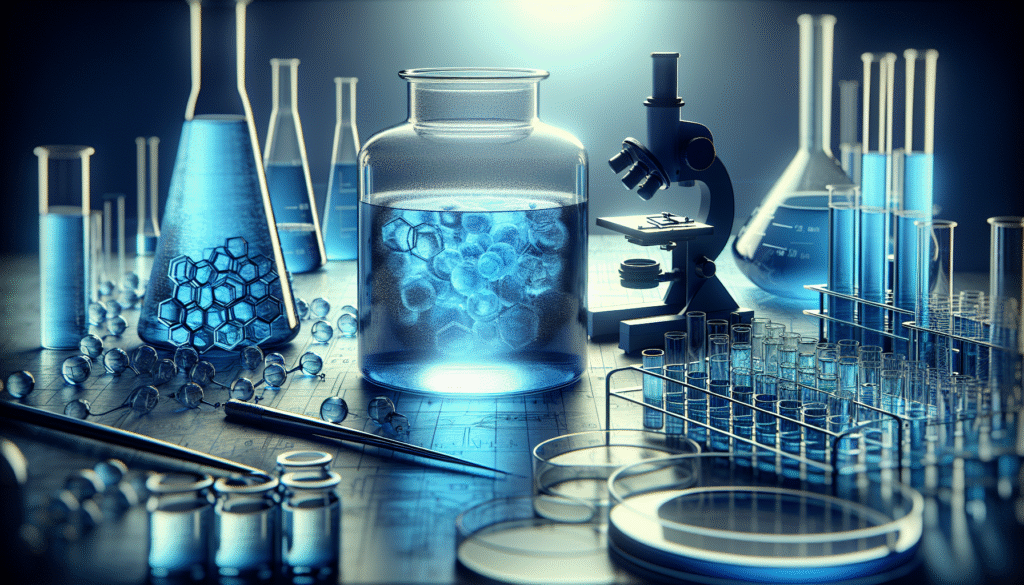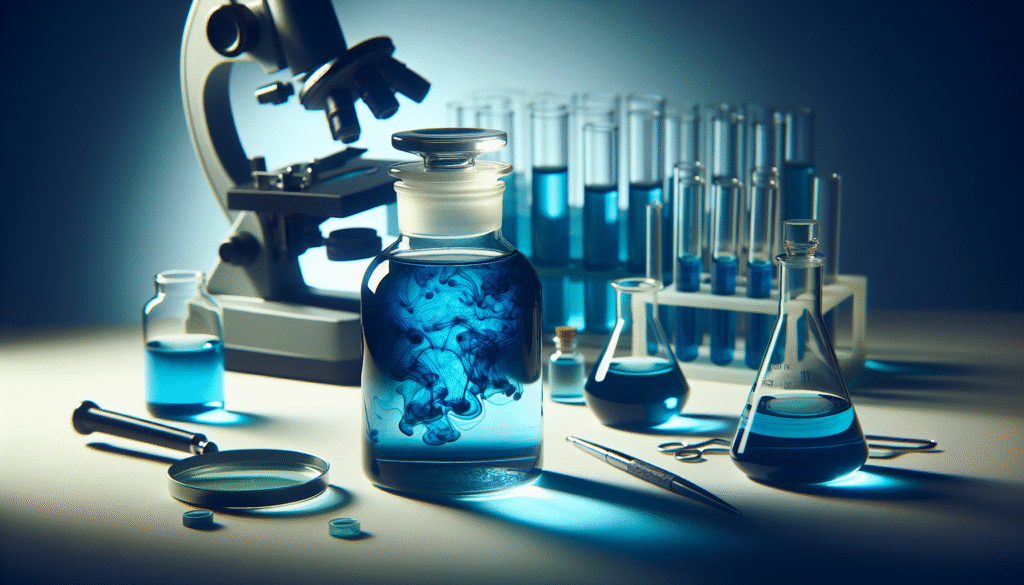
Have you ever considered how a single compound can impact health in so many ways? Methylene blue, a small molecule widely recognized for its historical use in the field of chemistry, has resurfaced in modern biomedical research due to its promising antimicrobial properties. This compound may yield significant benefits in treating various infections, an avenue worthy of exploration.
Understanding Methylene Blue
Methylene blue is a synthetic dye that has been utilized since the late 19th century for its staining properties in histology. Over the years, it has gained recognition for its diverse applications, especially in medicine. Beyond its use in treating methemoglobinemia, a condition characterized by high levels of methemoglobin in the blood, it has garnered attention for its potential antimicrobial effects.
Methylene blue operates at a molecular level, disrupting the functions of microorganisms, thereby inhibiting their growth and replication. This capacity makes it an intriguing candidate in the ongoing battle against antibiotic resistance, a looming threat in contemporary healthcare.
The Mechanism of Action
To fully appreciate how methylene blue operates as an antimicrobial agent, it is essential to understand its mechanism of action. Methylene blue acts through oxidative stress, generating reactive oxygen species (ROS) upon exposure to light. These ROS damage the cell membranes, proteins, and nucleic acids of microorganisms, leading to cell death.
In addition to ROS generation, methylene blue also possesses photodynamic properties. When activated by light, it can produce a form of oxidative stress that is lethal to bacteria, viruses, and fungi. This dual functionality provides a compelling rationale for its application in various contexts alongside traditional antimicrobial treatments.
Applications in Clinical Settings
You may wonder how methylene blue’s antimicrobial properties translate into real-world applications. Its versatility allows for wide-ranging usage across various settings, including traditional medicine, innovative therapies, research laboratories, and sometimes even veterinary care.
1. Treatment of Urinary Tract Infections (UTIs)
urinary tract infections (UTIs) are among the most common bacterial infections, particularly in women. Methylene blue has been studied as a potential adjunct therapy in the treatment of UTIs, especially when antibiotic resistance hinders successful outcomes.
In certain clinical trials, methylene blue has shown the ability to enhance the efficacy of commonly prescribed antibiotics, thus potentially reducing the dosage required and minimizing side effects. It acts by disrupting the biofilms that bacteria form, which are notoriously difficult to eradicate.
2. Skin Infections and Wound Management
Methylene blue’s properties lend themselves well to managing skin infections and promoting wound healing. Its application in topical treatments can decrease the bacterial load in wounds, speeding up the healing process.
In several studies, patients with infected wounds treated with methylene blue-infused dressings experienced shorter healing times. Additionally, being a non-toxic agent, it is often favored over conventional antibiotics specifically in sensitive populations, such as the elderly.
3. Dental Applications
You might be surprised to learn that methylene blue is also finding its way into dental care. Periodontal disease, a prevalent condition, can be exacerbated by bacterial infections. The application of methylene blue in dental practice serves as an adjunctive therapy in periodontal treatments.
Studies indicate that methylene blue can help eliminate harmful bacteria in the oral cavity, aiding in the management of conditions such as gingivitis and periodontitis. Its ability to reduce bacterial load combined with the photodynamic therapy method makes it particularly effective in dental hygiene solutions.

Safety and Side Effects
While the potential of methylene blue is impressive, safety remains a paramount concern. It is crucial to know that, like all medications, it can produce side effects. Understanding these helps you make informed decisions regarding its use.
Common Side Effects
The primary side effects associated with methylene blue are generally mild and may include:
- Nausea: Some users report gastrointestinal discomfort or mild nausea.
- Headaches: Headaches may occur, particularly with excessive doses.
- Skin discoloration: Methylene blue can temporarily stain the skin and mucous membranes, which may be concerning for some individuals.
Contraindications
It is also vital to recognize who should steer clear of methylene blue. Certain conditions could contraindicate its use, including:
- Serotonin syndrome risk: If you are on medications that affect serotonin levels (like SSRIs), using methylene blue can lead to serious interactions.
- G6PD deficiency: Individuals with this genetic disorder should avoid methylene blue as it can induce hemolysis.
Best Practices for Use
If you are interested in benefitting from the antimicrobial properties of methylene blue, understanding the best methods of use is essential. This ensures efficacy while minimizing risks.
Concentration and Dosage
The effectiveness of methylene blue often correlates with its concentration and the context of its application. For instance:
- Topical Use: Concentrations ranging from 0.1% to 1% are typically recommended for skin applications.
- Oral Intake: When utilized orally, dosages generally range from 0.5 to 2 mg/kg body weight, though specifics should always be determined in consultation with a healthcare professional.
Photodynamic Therapy
Considering the role of light in activating methylene blue’s antimicrobial properties, photodynamic therapy is an innovative approach to its administration. This method involves the application of light at specific wavelengths to enhance the effects of methylene blue, leading to more effective microorganisms eradication.
Typically, low-level laser therapy (LLLT) is employed, which has been shown to improve wound healing, reduce pain, and enhance the antibacterial effectiveness of methylene blue.
Combination Therapy
Given that antimicrobial resistance poses a significant challenge, employing methylene blue as part of a combination therapy can yield greater success. For example, combining methylene blue with established antibiotics can enhance their efficacy against resistant strains or biofilm-forming bacteria.
Proper Storage and Handling
If you decide to use methylene blue for its antimicrobial properties, proper storage and handling are crucial. Store the compound in a cool, dry place, away from direct sunlight to preserve its stability. Always follow handling instructions, as improper use can lead to unintended injuries or adverse reactions.

Recent Research and Future Directions
Ongoing research into methylene blue continues to uncover novel applications and improvements. For example, investigations into its role in treating respiratory infections and combating biofilms have shown promise. These studies could lead to breakthroughs in managing chronic infections that are particularly challenging.
Efficacy Against Antimicrobial Resistance
A growing area of focus is methylene blue’s potential to combat antimicrobial resistance (AMR). Researchers are investigating how its unique properties may complement existing antibiotic therapies, rejuvenating their effectiveness and extending their lifespans in medical applications. This research is particularly significant as the World Health Organization identifies antibiotic resistance as a critical global health threat.
Potential Cancer Treatment
Emergent studies are also exploring methylene blue’s applications in oncology. Its photodynamic properties can be employed to target cancer cells specifically while minimizing damage to surrounding healthy tissues. While this line of research is still in early stages, it demonstrates the versatility and potential of methylene blue in diverse therapeutic avenues.
Conclusion
As you consider the best ways to incorporate methylene blue into therapeutic regimens, it is essential to weigh its benefits against potential risks and side effects. Its ability to serve as an effective antimicrobial agent presents a compelling case for its use across various medical fields, from infections of the skin to challenging respiratory conditions.
Consulting with healthcare providers will back up your decision-making process, ensuring that you harness the benefits of methylene blue while safeguarding your overall health. The journey of this compound from a simple dye to a promising antimicrobial agent is a testament to the innovative potential within the realm of medicine. Moving forward, its applications may continue to expand, shedding light on new therapeutic possibilities that are both exciting and considerably impactful.